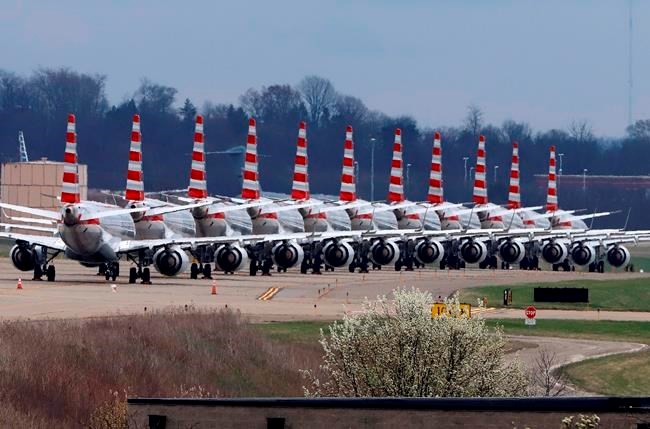DALLAS — American Airlines and United Airlines lost a combined $4 billion in the first quarter as the coronavirus pandemic triggered a sharp drop in air travel, and the airlines are busy borrowing enough money to survive until passengers return in large numbers.
Thursday's reports from two of the nation's four biggest airlines captured only the first weeks of the pandemic's impact in the U.S. The situation facing the airline industry has grown more dire since the first quarter ended: Air travel in the U.S. during April remained down 95% from a year ago, judging by the number of people screened at the nation's airports.
“Never before has our airline, or our industry, faced such a significant challenge,” American Airlines Chairman and CEO Doug Parker said.
With little money coming in from ticket sales, and unsure when the public will feel like flying again, airlines are hunkering down. They are raising money on private credit markets and borrowing from the federal government. They are slashing flight schedules, parking planes, and urging employees to retire early or take leaves of absence.
American reported a loss of $2.24 billion, the biggest loss since it came out of bankruptcy and merged with US Airways in 2013. The Fort Worth, Texas-based airline has cut its flight schedule by 80% in April and May and 70% in June. Fewer passengers will mean fewer employees.
“We’re going to be somewhat smaller than we intended to be” a year from now, Parker said in an interview. “Because we’re going to need to be smaller, we’re going to need to do something with the number of employees we have.”
American began the year with more than 133,000 employees. About 4,500 workers have taken early retirement, and about another 34,000 have accepted partially paid leave for three to 12 months, or fewer hours of work. Some of those taking leave couldn’t find child care.
Under the terms of federal aid they accepted, American and other U.S. airlines can't lay off workers until October. Parker said he thinks he can avoid layoffs after that, but it depends on how quickly air travel recovers.
“If demand doesn't rebound at all, and we're in October, we're all going to need to be figuring out what to do,” he said.
Chicago-based United posted a $1.7 billion loss, its biggest since 2008. The loss was expected, since United said last week that it suffered a pretax loss of $2.1 billion.
The airline is shrinking its flight schedule by 90% in May and probably a similar amount in June.
United CEO Oscar Munoz said deep schedule cuts and aggressive borrowing to boost liquidity would help the company bounce back when demand returns. He did not offer a prediction for when that might happen.
Both airlines stressed efforts to bolster liquidity — building up enough cash, they hope, to ride out the pandemic. They were recently approved for federal payroll help — $5.8 billion for American and $5 billion for United.
American estimated that it ended March with $6.8 billion in cash and other liquidity and will have $11 billion at the end of June. United said it had $9.6 billion in liquidity this week. American has applied for another $4.75 billion in loans from the Treasury Department at around 4% interest, and United is leaning toward applying although executives say they might not actually draw down the money if they can get better terms on the private markets.
The borrowing produces cash but does nothing to sell seats on planes.
Parker told The Associated Press that there has been a recent uptick in bookings — mostly for trips at least three months away — but it has been modest.
American’s first-quarter loss compared with a profit of $185 million in the same period last year. American said that adjusted for non-recurring items, it lost $2.65 per share. That was worse than the average forecast of a $2.08 per share loss from 15 analysts surveyed by FactSet. Revenue dropped 19%.
Similarly, United swung to a loss after earning $292 million in the first quarter of 2019. The adjusted loss of $2.57 per share was not as bad as the $2.85 a share loss that analysts had expected. Revenue fell 17%.
Shares of both airlines fell about 5%.
The American and United losses dwarfed the $534 million loss reported last week by Delta Air Lines, which is slightly larger by revenue, and a $94 million loss posted by Southwest Airlines this week.
David Koenig, The Associated Press




